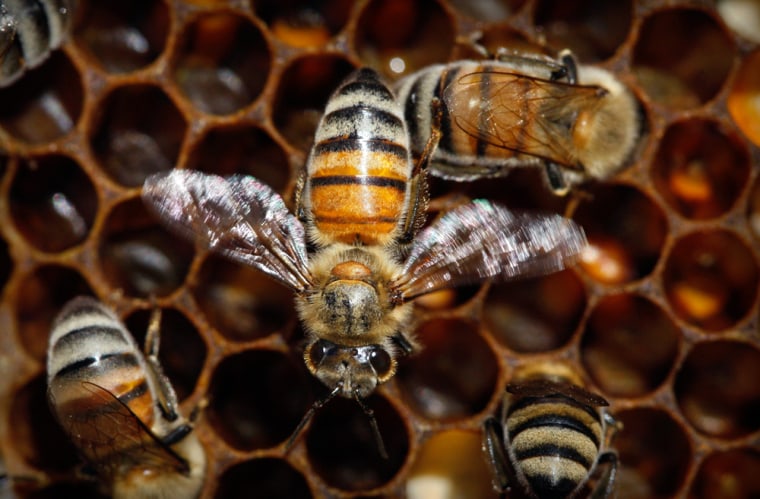A plant pathogen known as the tobacco ringspot virus has been added to the list of suspects in the long-running mystery of disappearing honeybee colonies.
The virus typically afflicts tobacco plants and soybeans, but researchers reported that it became increasingly prevalent in declining bee colonies. The study was published online Tuesday by the journal mBio.
"The results of our study provide the first evidence that honeybees exposed to virus-contaminated pollen can also be infected, and that the infection becomes widespread in their bodies," the study's lead author, Ji Lian Li of the Chinese Academy of Agricultural Science, said in a news release from mBio's publisher, the American Society for Microbiology.
The virus was found as well in Varroa mites, a beehive pest that also plays a role in weakening bee colonies. The researchers said the mites probably help spread the virus.
The University of Maryland's Dennis VanEngelsdorp, a bee researcher who played no part in the study, said the findings show how species-jumping viruses can add to the honeybees' woes. He pointed out that multiple factors, ranging from pesticides to parasites to loss of habitat, contribute to colony collapse disorder. Last spring, VanEngelsdorp and other experts reported that almost a third of America's honeybee colonies were lost during the winter of 2012-13.
"The cause of the symptoms ... is viral infection," VanEngelsdorp told NBC News. "What's interesting about this story is that bees have more viruses than we thought. So why suddenly are they susceptible to all these viruses?"
Answering that question is of vital importance: The U.S. Department of Agriculture estimates that a third of the human diet comes from insect-pollinated plants, and honeybees are responsible for 80 percent of that pollination.
More about the bees:
- Bees get microchips to shed light on die-off
- EPA issues warning labels for bee hazards
- NBC News archive on bee science
In addition to Ji Lian Li, the authors of "Systemic Spread and Propagation of a Plant-Pathogenic Virus in European Honeybees, Apis Mellifera" include R. Scott Cornman, Jay D. Evans, Jeffery S. Pettis, Yan Zhao, Charles Murphy, Wen Jun Peng, Jie Wu, Michele Hamilton, Humberto F. Boncristiani Jr., Liang Zhou, John Hammond and Yan Ping Chen.
Alan Boyle is NBCNews.com's science editor. Connect with the Cosmic Log community by "liking" the NBC News Science Facebook page, following @b0yle on Twitter and adding +Alan Boyle to your Google+ circles. You can also check out "The Case for Pluto," my book about the controversial dwarf planet and the search for new worlds.
